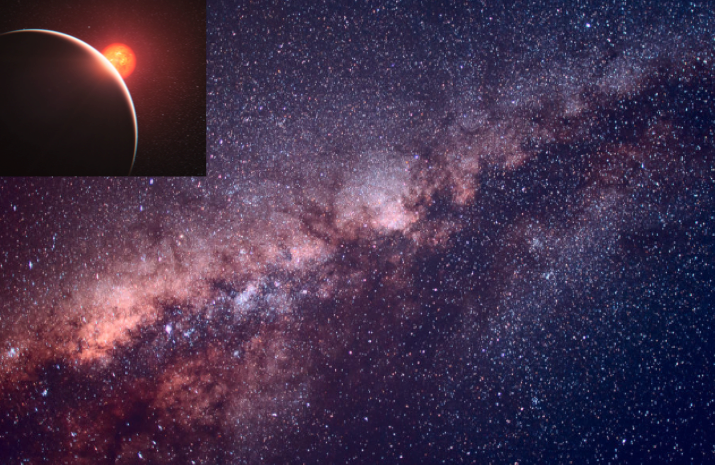Special Session SS7
30 June 2017
Near Infrared High Resolution Spectroscopy: where are we?
News:
Final Programme available
Aims and scope
 In the last two decades High Resolution (HR) Spectroscopy has been a rapidly growing field both from the scientific and technological points of view.
HR spectroscopy in the optical bands is now a mature field of research that produced outstanding results in many research fields, such as the detection of exoplanets and the study of stellar chemical abundances. Much fewer results were so far achieved in the near infrared (NIR) bands because of the great technical difficulties to build suitable instruments. Nonetheless, NIR is a crucial spectral range to explore, offering new challenges in the search and characterization of exoplanets, chemical abundances of cool stars and reddened objects.
In the last two decades High Resolution (HR) Spectroscopy has been a rapidly growing field both from the scientific and technological points of view.
HR spectroscopy in the optical bands is now a mature field of research that produced outstanding results in many research fields, such as the detection of exoplanets and the study of stellar chemical abundances. Much fewer results were so far achieved in the near infrared (NIR) bands because of the great technical difficulties to build suitable instruments. Nonetheless, NIR is a crucial spectral range to explore, offering new challenges in the search and characterization of exoplanets, chemical abundances of cool stars and reddened objects.
The detection and characterization of exoplanets is one the key science cases of modern astrophysics. In particular, the study of planets around M-type stars - the most numerous stars in the Galaxy - and the characterization of the atmosphere of transiting planet using molecular features (e.g. water, methane, carbon dioxide and oxygen) can only be achieved via NIR HR Spectroscopy.
At the same time, several stellar processes as mass loss, winds, magnetic fields and chemical enrichment are still not well known. The NIR spectral range allows us to investigate several types of objects, as young and reddened stars as well as old and evolved stars from the very inner Galaxy out to the Local Group.
The pioneering survey of APOGEE is generating the first systematic database of stellar spectra at moderate resolving power and over a limited range of wavelengths. Only a handful of NIR spectrographs with higher resolving power and broad spectral coverage (CARMENES, IGRINS, GIANO/GIARPS) are presently working, while a few others (e.g. CRIRES+, SPIROU and NIRPS) are expected to come in the near future.
Within this framework it is now important to review our achievements and collect information on the state of the on-going scientific and technological projects.
This EWASS Special Session is intended to gather experts in the NIR HR Spectroscopy on various topics and instruments, giving an opportunity to discuss and create new collaborations between the groups. The ultimate goal is achieving as soon as possible a level of expertise comparable to that since long available in optical HR spectroscopy. This is a mandatory pathway in preparation to the exploitation of the HR spectroscopy in the forthcoming ELTs era.
Programme
- 9:00 Welcome
- 9:10 Livia Origlia Near IR high resolution spectroscopy of red and reddened stellar populations: state of the art and new challenges
- 9:40 Giuseppe Bono WINERED at ESO/NTT as a stepping stone for E-ELT
- 9:55 Laura Inno Dissecting the Galaxy via NIR spectroscopy of young Cepheids
- 10:10 Meriem ElYajouri NIR Diffuse Interstellar Bands as tracers of interstellar cloud mapping and physical and chemical properties
- 12:30 LUNCH BREAK
- 14:00 Michaela Kraus Resolving structure and kinematics of B[e] supergiant stars' hot molecular environments
- 14:15 Matthias Kondrak CRIRES-POP: A spectroscopic atlas of the A7 Ib supergiant iota Carinae
- 14:30 Riccardo Claudi GIARPS: the unique VIS-NIR precision radial velocity facility in this world
- 15:00 Ilaria Carleo Radial velocities results from NIR spectroscopy
- 15:15 Poster Presentation
- 15:30 COFFEE BREAK
- 16:00 Andreas Quirrenbach The CARMENES Instrument and the M Dwarf Survey
- 16:30 Cristina Rodriguez-Lopez Effects of pulsations on time.series spectroscopy of M dwarfs and their implications for exoplanets searches
- 16:45 Andres Carmona SPIRou at CFHT: Searching for earth-like planets, unveiling the magnetic topology of T Tauri stars and advancing planet formation studies
- 17:00 Summary & Remarks
Invited speakers
- Riccardo Claudi (INAF-OAPD, Italy)
- Livia Origlia (INAF-OABO, Italy)
- Andreas Quirrenbach (Heidelberg University, Germany)
Scientific organisers
Serena Benatti (INAF-OAPD),
Nicoletta Sanna (INAF-OAA)
Contact
serena.benatti @ oapd.inaf.it,
sanna @ arcetri.inaf.it
Updated on Thu Jun 08 11:05:11 CEST 2017
|

